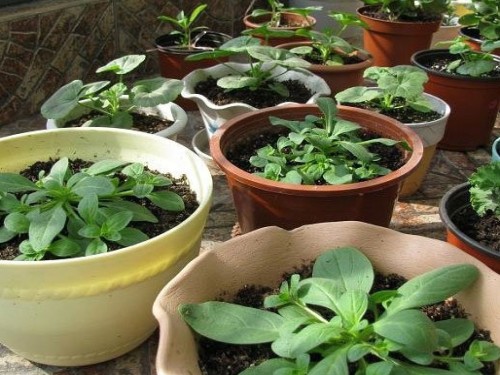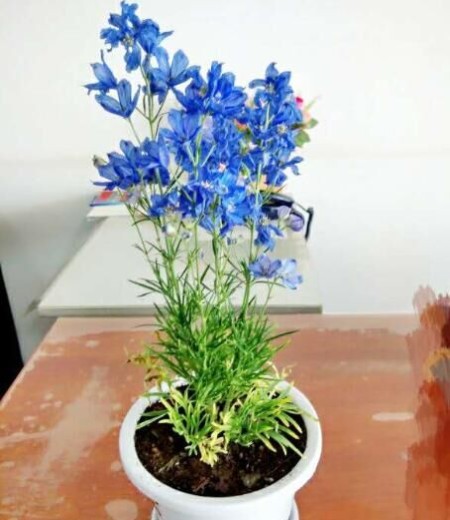Planting technique of Polygonum capitatum
Polygonum capitatum is an inconspicuous flower, and the Miao medicine is called "Dlob dongd xod" (similar to Chinese translation: "Soudang lock"). In the past, Polygonum capitatum was only an inconspicuous plant. In the mountainous areas of Guizhou, Polygonum capitatum is generally used to feed livestock, and only some Miao people who are proficient in herbs use it to make soup to treat people. Until now, there is such a story in the Miao family. In 1961, there were two teachers in a rural school in Matou Village, Guiyang City, Guizhou Province. One of them was a college student from a big city. Soon after this young man came to Guizhou, he got seriously ill. The villagers were so worried that they picked the Polygonum capitatum from the hillside and gave it to him. The young man's illness gradually improved. From this time on, Polygonum capitatum has become more and more magical in the countryside of Miaozhai. After research, it is found that Touhua has a good effect on the treatment of urinary tract infections, pyelonephritis and other urinary diseases.

According to a survey conducted by the Southern Institute of Medicine, the sales volume of "Weimen Rilinqing granule" produced by Weimen Pharmaceutical Co., Ltd. with Polygonum capitatum as the main material has leapt to the first place in the national hospital use of traditional Chinese medicine for the treatment of urinary tract infections. As the saying goes, "if the medicine is good, the medicine is good". In order to control the quality of Rilinqing granules from the source, the planting base of Polygonum capitatum in Weimen Pharmaceutical Co., Ltd. has passed the GAP certification of the Certification Center of the State Food and Drug Administration, which is the only GAP base certified by the State Food and Drug Administration, and has established promotion and planting bases of Polygonum capitatum in many suitable areas of Polygonum capitatum in Guizhou. Coupled with the modern process technology extraction and refining, from the source to ensure the quality of medicinal materials, so that patients can give play to the maximum effectiveness of medicinal materials.
Polygonum capitatum grows in patches, often growing in hillsides, wet valleys and other places. A small flower is insignificant, but the Polygonum capitatum all over the mountains is just like the Weimen people holding hands together, all for the sake of people's health. The stamens of the lilac Polygonum capitatum bloom with amazing beauty, and together with the Weimen people who work hard for the health industry, the cause and beauty are closely linked to a new height.
[raising seedlings]
1. Nursery bed selection
The seedling bed generally chooses the sandy soil which is leeward to the sun, convenient water source, fertile soil, good water permeability and air permeability as the breeding bed soil of Polygonum capitatum. All areas with heavy stickiness, consolidation, large water content, thin ground, high groundwater level, easy to stagnant water and pollution can not be used as seedling breeding ground.
2. Preparation of nursery bed soil
The breeding of Polygonum capitatum is generally carried out from the end of February to the beginning of March every year, but the preparation of the seedling site should be completed from November to December of the previous year, specifically: ① fertilizer preparation: generally refers to farm manure, each standard box (10 m long, 1 m wide effective seedling area is 1 standard box) should prepare 200kg barnyard manure, covered with plastic film for fermentation treatment, compaction and standby. ② deep turning the bed soil: the soil that will be used as the seedling bed, after clearing the sundries, press the deep 20~25cm deep plough, overwintering, and plough again 15 days before raising seedlings, so that the soil is fully refined and there is no longer a large clump of solidified mud. ③ other materials that need to be prepared: compound fertilizer, common calcium, bamboo paper (used in small convex shed), dioxin, decaying soil, plastic film, agricultural film (to be used in small convex shed), seeds of Polygonum capitatum, etc.
3. Sowing seeds
Sowing time February 25-March 5, before sowing, plow the land that is going to be used as a seedbed again, discard impurities, and open the box according to 10 m in length and 1 m in width (after clearing the box). The compartment distance is 0.5m, ridging, ridge height 2025 cm, then the prepared mature and fermented barnyard manure is 200 kg per box, compound fertilizer 1 kg, common calcium 2 kg, evenly applied on the compartment surface, fully stirred with 15 cm thick soil, leveled the compartment, poured enough bottom water, applied a layer of 0.5 cm thick decaying soil, and then disinfected with 2000 times of liquid diuroxone, poured enough bottom water again before sowing. When sowing, each standard chamber first stirred 500 g of fine soil according to 20 g of seeds, then evenly stirred 2 000 g of fine soil, and evenly sowed it on the prepared chamber surface for 3 times. Then cover the plastic film on the side of the box, insert a note and a small convex shed bamboo sheet, cover it with agricultural film and press it tight.
4. Management
Polygonum capitatum began to emerge 7-10 days after sowing (low altitude or high temperature and sunny day for a long time, 5-7 days after sowing). Usually, we should pay attention to observe the emergence of seedlings, especially 7-10 days after sowing, when 60% of the seedlings are found, pull out the note, remove the plastic film on the side of the box, and observe whether the side of the box is short of water. If it is not very short of water, do not water for the time being. It usually takes 4-5 days to water most of the seedlings after the root system is fixed. Otherwise, the seedlings are easy to be washed down and the roots are difficult to be fixed. When the seedlings are neat and the roots are fixed, it is only necessary to do a good job in seedbed water management and weeding.
[transplanting]
The transplanting time of Polygonum capitatum is generally from April 20 to May 10. The planting land of Polygonum capitatum should be treated as follows: after ① entering winter, the straw should be removed. Ploughing the soil, improving soil properties and eliminating the source of overwintering diseases and insect pests. ② prepares farm manure, and unripe farm manure should be treated as mature. ③ carried out soil preparation to pick up debris such as field stones and tree roots, and applied 30000 kg mature farm manure and 300 kg compound fertilizer to the soil evenly per hectare. Open the car at a width of 1 m with a distance of 45 cm. The facade is broken and leveled, waiting for transplanting.
According to the growth of the seedlings to determine the specific transplanting time, generally when the seedlings reach 6 leaves, that is, the seedlings are taken and transplanted. One day before transplanting, enough water should be poured on the seedling bed, and the night seedlings should not be left over. when transplanting, first pull a rope in the middle of the box, plant one under the rope, and then extend the row spacing of 20 cm × 20 cm to the left and right, and plant 5 rows in each box. The fixed root water was poured in time on the same day after planting, and attention was paid to check the deficiency and make up the seedlings 7 days later.
[management]
When transplanting ends, it is required to do a good job in ploughing, weeding and pest control, and pay attention to watering and drainage in case of drought and flood.
1. Field management: after transplanting Polygonum capitatum and replenishing seedlings in mid-May, it entered the stage of field management. Polygonum capitatum was generally closed in June, weeding every 10 days, watering biogas slurry at 1:1 and applying 150 kg compound fertilizer per hectare. If there are fewer weeds, the number of weeding can be reduced accordingly. At the same time, we should do a good job in fighting drought and drainage.
2. Prevention and control of diseases and insect pests Polygonum capitatum should be observed frequently and weeds should be removed after transplanting. Strengthen the prevention and control of diseases and insect pests, especially at the beginning of transplanting, the harm of small land tigers and jumping beetles is particularly serious, and timely measures should be taken for prevention and control. The small ground tiger can be caught manually or controlled with zinc parathion 1 500-2 000 times, and leaping beetles can be foliar sprayed with dichlorvos 1 500-2 000 times. The occurrence of Polygonum capitatum, other diseases and insect pests, is less.
[harvest]
In late August, Polygonum capitatum was harvested for the first time on a sunny day, leaving stems and branches about 10 cm long, removing weeds and soil, and drying in time. In the second harvest, all the ground was cut, leaving no stems and branches.
Time: 2019-05-25 Click:
- Prev

Planting method of potted Petunia in Family
When it comes to petunia, I'm sure many flower friends know that it has many names, such as Bidong eggplant, hybrid bangyu Chaoyan, Ganoderma lucidum peony, shuttlecock flower, short trumpet, sweet potato flower, bangyu Chaoyan. It is a perennial herb, often cultivated once or twice. But the flower friends may not know the planting method of petunia.
- Next

Planting techniques of potted blue sage
The blue sage in the park is native to southern North America, also known as a string of blue. Because of that affectionate blue, a piece of blue, just amazing. If as far as a single plant is concerned, it is just a bunch of blue flowers, it is difficult to keep people's footsteps. But this piece of blue, momentum grabs people. Blue and purple are just visual differences.
Related
- Fuxing push coffee new agricultural production and marketing class: lack of small-scale processing plants
- Jujube rice field leisure farm deep ploughing Yilan for five years to create a space for organic food and play
- Nongyu Farm-A trial of organic papaya for brave women with advanced technology
- Four points for attention in the prevention and control of diseases and insect pests of edible fungi
- How to add nutrient solution to Edible Fungi
- Is there any good way to control edible fungus mites?
- Open Inoculation Technology of Edible Fungi
- Is there any clever way to use fertilizer for edible fungus in winter?
- What agents are used to kill the pathogens of edible fungi in the mushroom shed?
- Rapid drying of Edible Fungi

